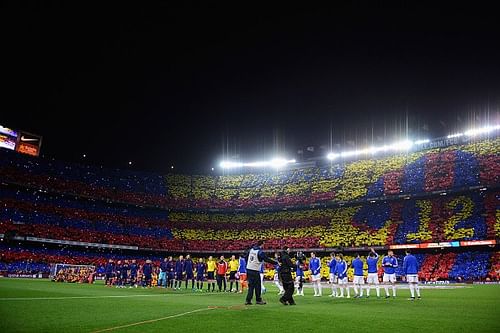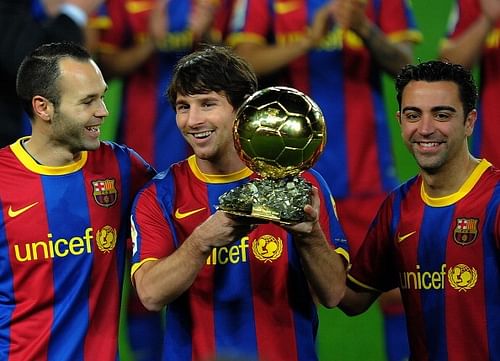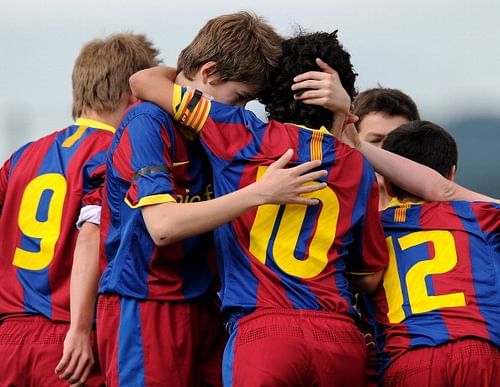
Explaining the structure at Barcelona - How the club functions on and off the pitch

FC Barcelona has long been revered for their style of play and despite certain tactical variants becoming fashionable or indeed passe, the Catalans have stuck rigidly to their principles in undertaking to play football a certain way.
Aside from the occasional big signings, the Blaugrana try to utilise the talent available at their academy, La Masia and the reason isn’t only a financial one, as many of you might expect.
Right from the very youngest age group, Barcelona ensure that they have all of their teams playing in the same way. This particular style can be traced back to when Johan Cruyff was in charge of the senior team.
A visionary in a football sense, Cruyff saw the benefits of rolling out a certain style across all ages. Simply put, it’s why when a new Academy graduate makes the step up to the first team, he rarely looks out of place nor is overawed being in such esteemed company.
Each player knows when to make even the slightest movement to create half a yard of space, thus allowing intricate passing triangles to continue to develop across the pitch. Bamboozling opponents as they do so.
Barcelona’s ‘simple football’

To coin a phrase “it’s not rocket science” even if other teams look up to Barca as the exemplar and deign to players who seem like they’re from another planet.
Simplicity is genius, and Cruyff famously once noted himself that “football is a simple game but the hardest thing to do is play football simply.” Yet Barcelona manage it with aplomb, very rarely overcomplicating matters.
La Masia remains at the heartbeat of what Barcelona is a football sense are about. Former president Joan Laporta called it their “dreams factory” and when you consider just who has made it through the ranks in the recent past, the dream is very much a reality.
Messi, Iniesta, Xavi, Puyol, Pique, Fabregas, Bartra, Munir, Thiago, Busquets. Not to mention at least 30 other players who now ply their trade elsewhere in the top five leagues in Europe.
Albert Capellas, the club's senior youth coordinator back in 2010 noted:
“From the age of seven to the age of 15 everything is about working with the football.
“With the very small boys, the most important thing is to control the ball very well, to have the ability to run with the ball and to think very quickly and execute their passes very well. We spend so much time on passing and on tactics, to understand our style of play, which is the same from the eight-year-olds to the first team.
“It's not luck. It's work. It's our model, which has been honed over many years by lots of people providing specialist skills and all working in the same direction, with the same objective: to prepare players for the first team.”
Capellas even likened the La Masia model to the traditional Catalan castellers, the human towers often seen at festivals in the region:
“Our Catalan castles always have a strong base. You need to have everyone in the right position, and you can't get someone to the top of the castle without the correct foundations. But you must always have a strong base because without that you have nothing.”

It’s also worth remembering that the club place fulfilment of an education as it’s highest priority and those lucky enough to make it to the older age groups will spend more of their day learning relevant and necessary skills away from the football pitch because Barca want good people as well as good football players dominating their ranks.
Capellas again:
We train the youngsters to be good people with a healthy lifestyle and help them to be happy with their way of life. It's very important for us that the boys have respect for others. They have to be good people, like gentlemen.
When they play matches we impress on the boys three objectives. Firstly, they must be the more sporting team, committing fewer fouls and being less aggressive. Then they must try to win by playing very well, more creatively than the opposition, with attacking football.
And finally they need to win on the scoreboard. But we don't want to win without the first two aims being fulfilled.
For many outside of the club, it appears to be an unsustainable utopian existence, but Barca are the standard bearers and proof that such a model can, and does, work.
Barcelona’s model
A simple model that has remained untouched for many years, and thanks to the ownership of the club – by fans (Barca’s soci membership) – that is likely to remain so.
There are in the region of 140,000 members who pay roughly €150 per year to be represented by a group who meet with the board to vote on major decisions. Only the adult members are allowed to vote in the presidential elections and each president of the club serves a four-year term carrying out the business of the club on behalf of the membership.
Everything including finances, sporting affairs and otherwise must first be approved by members before they can pass into club statute.
There are a handful of fringe benefits for the club members to enjoy, for example discounted tickets and the opportunity to buy season tickets, despite an extensive – 40+ year – waiting list, but the ownership of the club and having a “voice” is the reason most tend to part with their money.
Further, through the club network of official Penyes (supporters clubs), each and every fan of the club is made to feel important. In a club that routinely has 90,000 or so attending its home games, plus the wider membership, that’s no mean feat. More importantly, it feels completely genuine and not forced on the part of the club.
The “mes que un club” (more than a club) strapline that the club associates itself with, isn’t just a baseless marketing tool. It encompasses an ethos that Barca try to display in all things. Think of the partnership with Unicef as the prime example.

Everyone at the club remains accountable to the members. From the bottom to the top. Look at how Sandro Rosell was forced to resign his presidency when one such member decided to take him to task over the purchase of Neymar.
Where else on planet football would you find such accountability? A club where it’s fan base can mount a genuine and serious challenge to the credibility of persons working within it.
In this day and age when football is moving further and further away form its working class roots, Barca have become the exception rather than the rule. That’s a real shame but it remains incredibly successful on the pitch whilst not beholden to any rich benefactor.
That’s a lesson for us all.